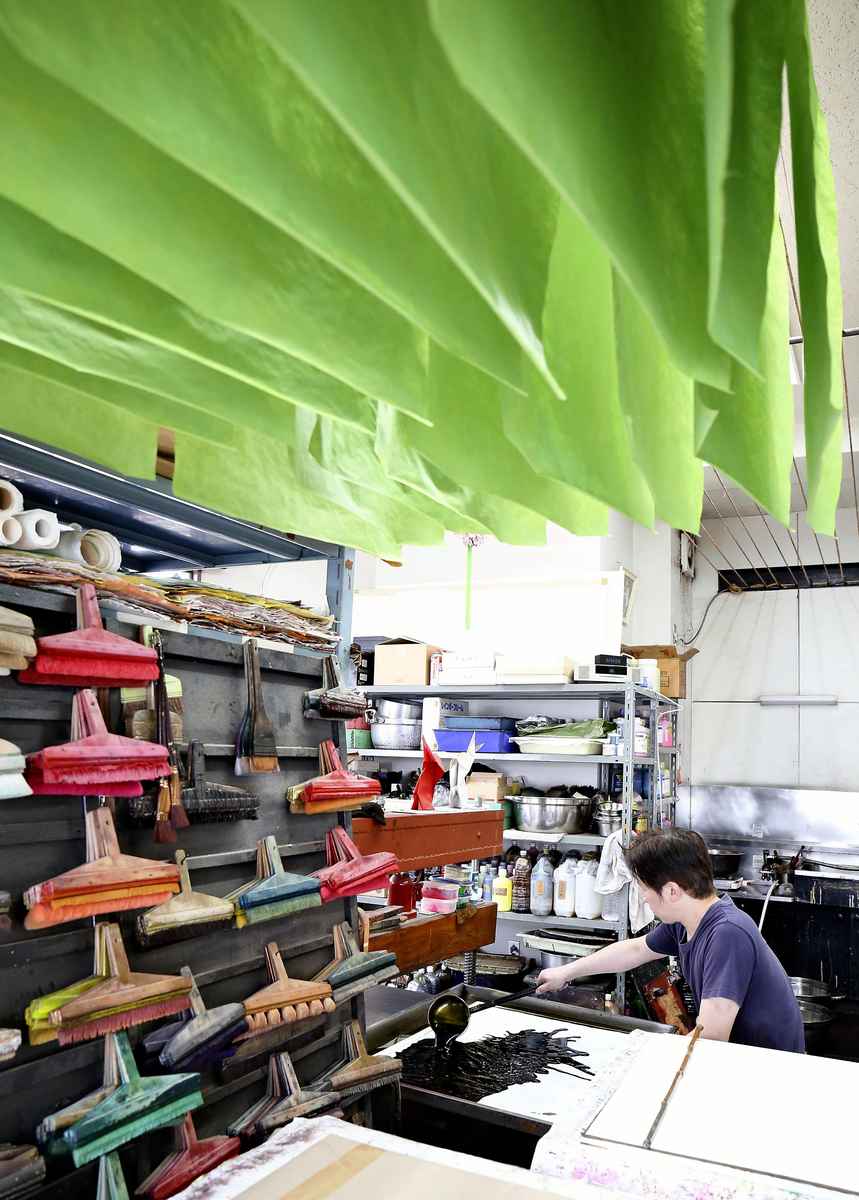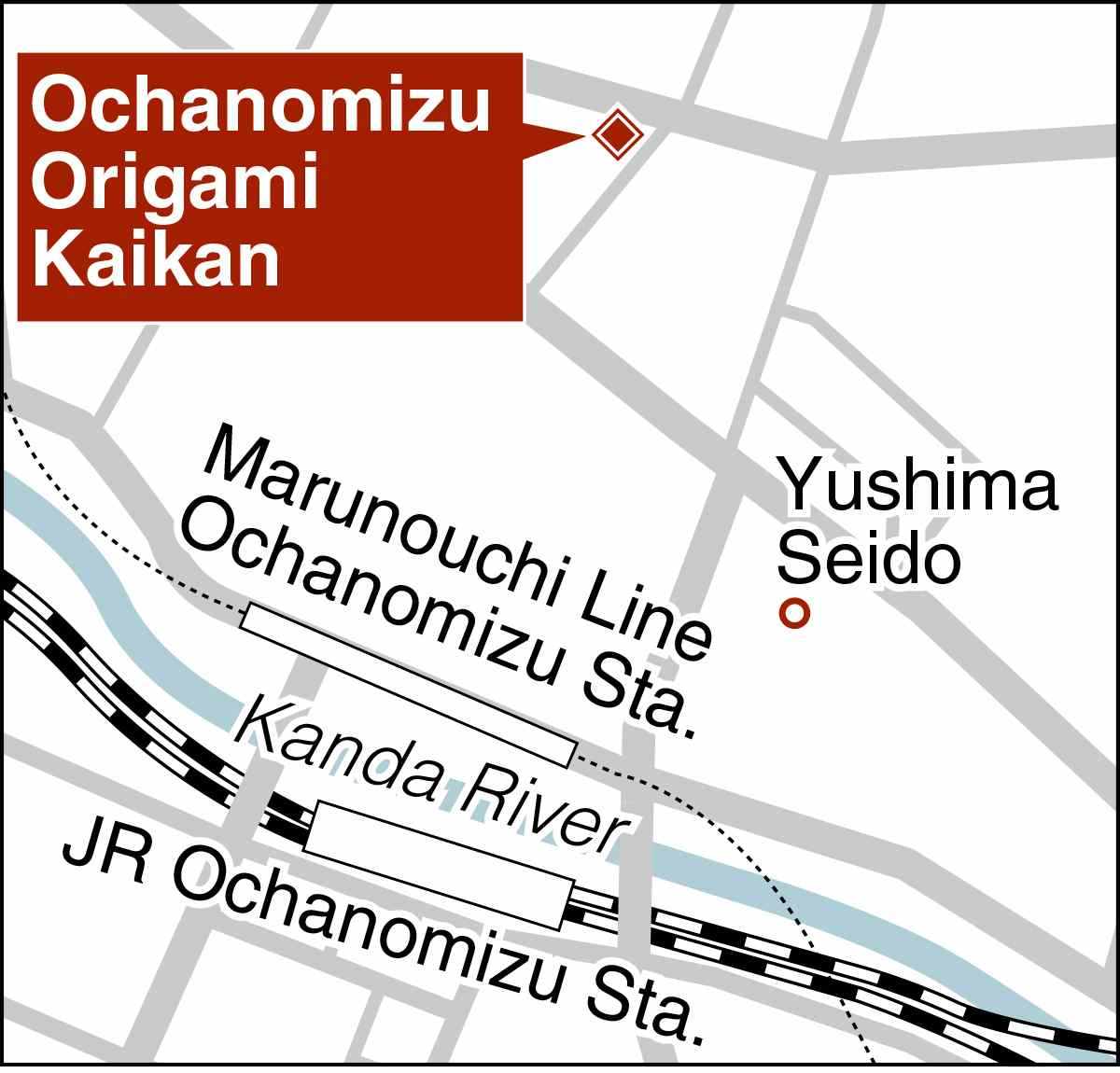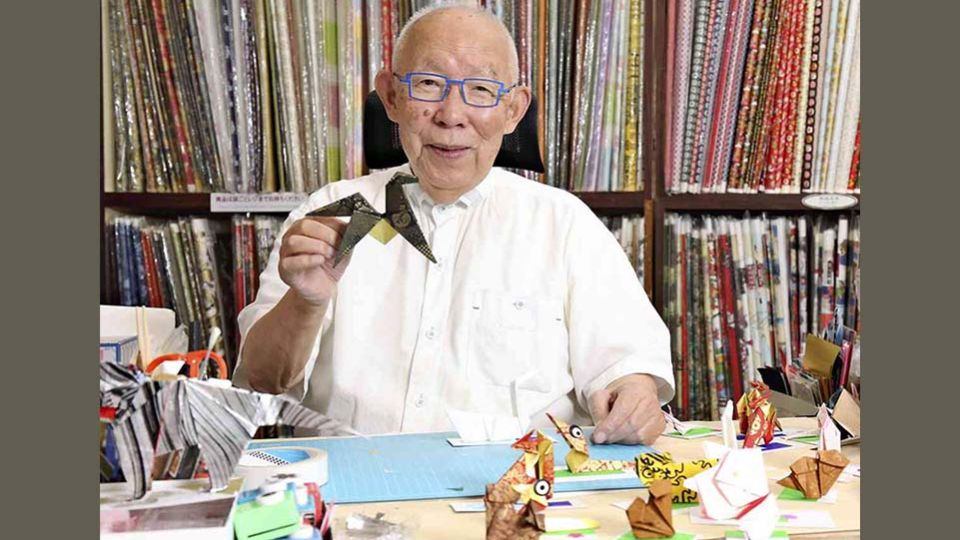September 2, 2025
TOKYO – In Tokyo’s Bunkyo Ward, it’s common to see foreign tourists drawn to a building near Yushima Seido in the ward’s Yushima district, stopping to admire the origami creations in the window. Once inside the Ochanomizu Origami Kaikan, they discover a vibrant world in which paper transforms into art, and artists keep alive a centuries-old tradition with beautiful, hand-dyed papers.
“You can even do origami with a paper napkin. Just fold it in half twice. Tie it, and look — you’ve made a ballerina,” said director Kazuo Kobayashi, 83.
Speaking in broken English, Kobayashi showed how to fold a swan and a rising sun for seven visitors from the U.K. and Canada in the shop on the third floor. He noted that foreigners make up a sizable part of the clientele, accounting for about 70%-80% of all visitors.
Kobayashi is the fourth-generation owner of a paper dyeing shop founded in 1858. He said that the first-generation owner mastered general washi Japanese paper processing techniques and started the paper dyeing shop.
During the Meiji era (1868–1912), the government introduced origami into early childhood education. At the education ministry’s request, the shop created the world’s first square-shaped origami paper. The Ochanomizu Origami Kaikan hall opened in 1972 as a center for sharing origami, and the company later changed its name to match the hall’s name.

Rose origami kits in the shop on the third floor. PHOTO: THE YOMIURI SHIMBUN
On the fourth floor, visitors can see craftsmen hand-dyeing washi Japanese paper in a workshop. The origami paper, made by dyeing kozo paper in a dye solution, is thin and durable. Kozo paper is a kind of washi made of kozo plant, and makes it possible to create intricate folds.
A mid-floor gallery displays three-dimensional animals and other creations made from this special paper.
After World War II, origami became known around the world as a traditional Japanese art form. In his 30s, Kobayashi began pursuing origami more seriously, traveling nationwide to hold classes and give lectures abroad to share the message that anyone, regardless of age or gender, can enjoy origami if they have a piece of paper. After finishing his demonstration, he smiled broadly and said, “They [the foreign tourists] have come all this way, so I want them to leave happy.”

A craftsman dyes washi Japanese paper. PHOTO: THE YOMIURI SHIMBUN

The mid-floor gallery features three-dimensional animals. PHOTO: THE YOMIURI SHIMBUN
Ochanomizu Origami Kaikan

MAP: THE YOMIURI SHIMBUN
Address: 1-7-14 Yushima, Bunkyo Ward, Tokyo
Access: A 5-minute walk from Ochanomizu Station on the Marunouchi Line
Hours: Open from 9:30 a.m. to 4:30 p.m., closed on Sundays and public holidays. Closed during the summer, yearend and New Year’s holidays. Free admission.

